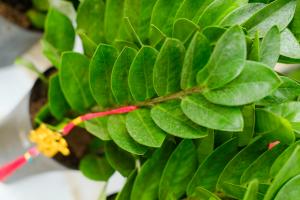Introduction
In the microscopic world of water, there are a plethora of life forms including various types of bacteria, algae, and other microorganisms. Among these microorganisms, microscopic water plants are an important part of the aquatic ecosystem as they play a vital role in the food chain. In this article, we will explore what eats a microscopic water plant and their significance in the aquatic world.
What are Microscopic Water Plants?
Microscopic water plants, also known as phytoplankton, are single-celled or multi-cellular plants that can be found drifting in oceans, seas, lakes, and other bodies of water. They are autotrophic organisms that use photosynthesis to create their own food from sunlight, carbon dioxide, and water, similar to larger plants. Unlike larger plants, however, they do not have roots, stems, or leaves. Instead, they are composed of a single cell or a cluster of them.
Significance of Microscopic Water Plants
Microscopic water plants are a crucial part of the food chain in aquatic ecosystems, as they are the primary producers that feed other organisms. They serve as a source of food for a multitude of organisms, including zooplankton, tiny crustaceans, and larval fish, which rely on them for sustenance. In turn, larger marine predators such as whales and sharks depend on these small organisms for their own survival.
What Eats Microscopic Water Plants?
A variety of organisms consume microscopic water plants. Zooplankton and other small crustaceans feed on them directly. Fish, larger crustaceans such as shrimp or crabs, and even other predators such as sea turtles consume zooplankton, making microscopic water plants an essential part of the aquatic food chain. Some species of jellyfish and tunicates also feed on microscopic water plants.
Threats to Microscopic Water Plants
Human activities such as pollution, overfishing, and climate change can have grave consequences on the health of the aquatic ecosystem, including the population of microscopic water plants. Excessive use of fertilizers and other chemicals can cause algal blooms, which is an overgrowth of microscopic water plants. This excess growth of microorganisms can create oxygen-depleted dead zones in the water, killing off other aquatic organisms. Additionally, rising temperatures and changes in ocean currents can lead to changes in the distribution of microscopic water plants, altering the entire food chain in the ecosystem.
Conclusion
Microscopic water plants are a crucial part of the aquatic food chain, providing sustenance for zooplankton, tiny crustaceans, and larval fish. They play a vital role in the health of the ecosystem and must be protected in the face of threats from human activities. It is essential to maintain a balance in the aquatic ecosystem to ensure the survival of all its inhabitants, including microscopic water plants.

 how many times do yo...
how many times do yo... how many planted tre...
how many planted tre... how many pine trees ...
how many pine trees ... how many pecan trees...
how many pecan trees... how many plants comp...
how many plants comp... how many plants can ...
how many plants can ... how many plants and ...
how many plants and ... how many pepper plan...
how many pepper plan...

































